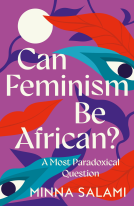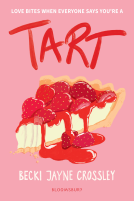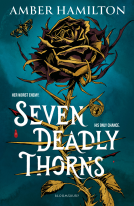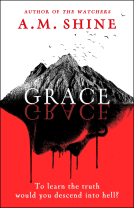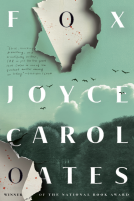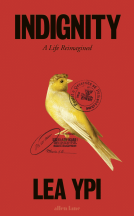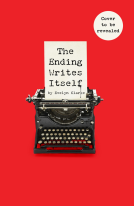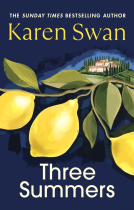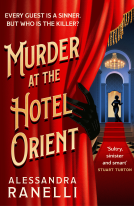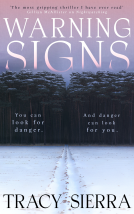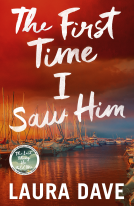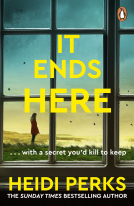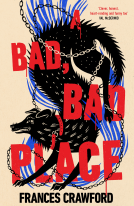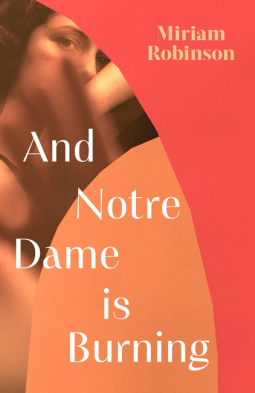
And Notre Dame is Burning
by Miriam Robinson
This title was previously available on NetGalley and is now archived.
Send NetGalley books directly to your Kindle or Kindle app
1
To read on a Kindle or Kindle app, please add kindle@netgalley.com as an approved email address to receive files in your Amazon account. Click here for step-by-step instructions.
2
Also find your Kindle email address within your Amazon account, and enter it here.
Pub Date 7 Aug 2025 | Archive Date 7 Aug 2025
Little, Brown Book Group UK | Corsair
Talking about this book? Use #AndNotreDameisBurning #NetGalley. More hashtag tips!
Description
'A beautifully wrought, thought provoking novel from a thrilling new voice in literary fiction' Charlotte Heathcote, Mail on Sunday
'Miriam Robinson is an incredible writer and this is an astounding debut . . . This will definitely be on prize lists' Nina Pottell, Prima Magazine
'A beautiful account of one woman's story that shines with the truth of all our stories' Sophie Ward, author of Love and Other Thought Experiments
'Robinson's debut is exceptional' Katie Fraser, The Bookseller
'A heartbreakingly beautiful novel about the beginnings and ends of life and love and marriage, with echoes of Claire Kilroy and Miranda July in its honesty about the female experience. Miriam Robinson is a vital new voice in literary fiction, and I can't wait to see what she does next' Hattie Williams, author of Bitter Sweet
'A stunning exploration of betrayal' Tanya Shadrick, author of The Cure for Sleep
I find myself wondering what would have happened if I had been more clear. If our relationship had not begun with this one tiny untruth.
Time has flattened for Esther.
Her storybook marriage begins, and ends, in the shadow of Notre Dame cathedral. Sifting through the ashes of their years together, a time now collapsed by grief, she finds a mismatched litany: mountain lions, a Paris bookshop, bad dancing, bad faith, marshland, prairieland, miscarriage, motherhood, bagels, Eve.
In order to understand this new story, Esther seeks help - from generations of women, from a book about evolution, from a friendly philosopher/scientist with a solid grasp of the space-time continuum.
Mostly, though, she writes - fragments, notes, letters - tracing a fine line between a story that soothes and one that suffocates; confronting the impossibility of communicating anything in the right way, at the right moment, to her daughter. Esther writes, and rewrites, until time slowly takes shape again.
This extraordinary debut is an excavation of betrayal, of motherhood, of time and timelessness, of guilt and consequence, of love coming to an end. Told with dry wit and a startling ferocity, And Notre Dame is Burning heralds an urgent new voice in literary fiction.
Available Editions
| EDITION | Other Format |
| ISBN | 9781472159717 |
| PRICE | £18.99 (GBP) |
| PAGES | 368 |
Available on NetGalley
Average rating from 24 members
Featured Reviews
 Paul F, Reviewer
Paul F, Reviewer
“Ravi is in the bookshop when it happens. He climbs onto the roof and begins to film with his phone and posts the videos, all in one long thread, one after the next after the next. The TV networks use his footage, call him for comment. He is all over the news. He is someone who is acting in the world. My parents, in America, see him on the news. My friends, everywhere, see the videos, which are viewed by thousands. At 5 a.m., as the last line of his thread, he tweets to the world:
Across from this spot where the flames burn now, my wife and I kissed for the first time. But things change: the years have passed, it is time to divorce. And Notre Dame is burning.”
And Notre Dame is Burning is a fascinating debut novel and one I hope to see featured on prize lists, perhaps starting with the Goldsmiths Prize.
The novel is narrated in the first person by Esther - or at least that’s how her future self addresses her past self, but this is a novel where most characters are known by pseudonyms.
Told in fragmentary pieces, the novel is perhaps centred around (this is not a novel with a clear centre or a linear progression) the narrator suffering a miscarriage and also finding out that her husband had an affair, or indeed affairs.
“Betrayal is a palimpsest. An overwrite. It scrubs most of what was written on your parchment and emblazons a new story in its place, more important, more real and relevant than what was there before. Except little fragmented bits of the old story remain, if you look closely. The ghosts of the old eradicated story haunt the new. Faint, emaciated fingers trying to grasp something they can’t quite hold.”
The bookshop featured above is obviously (although not named) the wonderful Shakespeare & Co, which is also where the narrator first met her husband (whose was introduced to her, incorrectly, as Ravi and she has chosen to use that pseudonym here):
“The moment –perhaps not the moment I knew I would marry him, but the moment I awoke to his presence –was tiny. So tiny, in fact, and lacking in detail that there is almost no story here, and yet I don’t think there could have been the story of us without this. The four of us were leaving the bookshop. We walked up a few stone steps, ready to cross over onto Île de la Cité (C’est juste en face de Notre Dame, I would tell the rare French person who could not locate the shop). He said something, something infinitesimal but desperately familiar, that made me laugh. It was the kind of laugh that takes you by surprise, that shakes your shoulders before your mind has fully caught up to the joke. I couldn’t unsee him after that.
I don’t remember the joke, but I remember the laugh.”
The novel is largely told in letters addressed (although not necessarily sent) to various people, primarily her miscarried child, but also to the women with whom her husband had affairs (all of who she addressed as Eve), her past self, her husband and her living daughter.
The novel is also in close and respectful dialogue with Cat Bohannon’s 2023 non-fiction work Eve: How the Female Body Drove 200 Million Years of Human Evolution, and powerfully portrays the modern female experience, contextualising it in history and evolution.
The narrator acknowledges early on how the two key events have collapsed her experience of time, and the novel reflects that with its fragmentary and non-linear structure, where repetition and recurring motifs play a key part.
“Probably I do not mean to speak about time at all. Probably what I mean to say is this: I cannot identify when or where this story began. I cannot say if it was this year, when we lived for six months in Switzerland, or before that, at home in London, or before that, when our daughter Annie was born, or before that, when the sky went red over Paris. It might have been before that, when they bulldozed Colorado prairie land to make the Denver suburbs, or before that, when England drew a ragged line through Pakistan and India, or before that, with the killing of the Jews (Which killing? Be specific), or before that, with all the killings of all the Jews. Perhaps it was even before that, when Eve plucked the apple from the tree, or before that, when Miriam and her mother sent Moses downriver in a reed basket, or before that, with the flood. I cannot find the starting line. It is too difficult to say.”
As one small example of how the repetition works, the narrator discovers a form of sanctuary in the urban marshes near her London home, but in a first extended piece (which in this book means 2/3rds of a page) on the topic, she explains how she can not really escape there due to various intrusions. Returning to that several times the observations get shorter - “I go walking in the marshes. You cannot disappear in the marshes. There is the train from Liverpool Street. There is the pylon. There are the wires. There are the Hasidic Jews and the taunting, prickling plants”. - until by the novel’s end simply the line “I go walking in the marshes” is enough to invoke a (Proustian? Pavlovian?) response in the reader who remembers the litany of challenges.
A common feature of debut novels is they can pack too much in - material that might have made future novels. There is an element of that here, but deliberately and effectively so, since the narrator also explains, meta-fictionally, how her writing evolved and various projects she abandoned or left as unfollowed trails. This can though mean that some element of the repetition - one on mountain lines for example - felt to me a little orphaned, and others - notably an incident early in her relationship with Ravi in Paris where she was questioned by the police, accused of being involved in a fraud - though clearly key to the narrator’s message, passed me by to an extent.
The style of the book - the family history; the use of pseudonyms - almost invites you to consider it autofictional. But trying to work out what is real and what fiction is either missing the point, or perhaps the opposite. As the author has said:
“So much of the book was about what’s real and what’s not real – about the ways in which women have been made, time and again, to question their reality and doubt their instincts.”
I must admit to going down a futile rabbit hole trying to identify the documentary that was Ravi’s key project for over a decade, but having more luck with a portrait mentioned (although unable to verify its connection to the author as opposed to the narrator):
“I looked again today at the painting of my paternal grandmother and her twin sister, my great-aunt. Really looked at it, the two of them sitting next to each other, in white nightdresses that are just on the wrong side of appropriate for twelve-year-old girls. Of the two of them, I always thought of my great-aunt as the one who looks nervous. Too young to be subjected to a painter’s gaze, she sits slightly lower than my grandmother, with one arm clasped over her stomach. Her hair is longer, more childlike, and she folds over her arm ever so slightly. But now that I look again I see that she has support —the chair, her sister’s hand, even that arm of hers. She is nervous as she looks at the painter, but still she is looking at him. Straight on. It is my grandmother —taller, back straight, bobbed hair held tight with a thick green headband —who looks away, past the artist to somewhere else, as though in her mind she has vacated the room. It could be that she is just bored. Or perhaps she is coping in her own way with the intensity of being scrutinised. Perhaps by looking away she is making the world –or herself –disappear.”
Which is The Twins by Boris Grigoriev.
I realise, reviewing my review, that I have failed to mention at all perhaps the novel’s most powerful, in emotional more than literary terms, writing, which is on the topic of both the physical experience and mental aftermath of miscarriage, something far more common that is talked about and seldom written about in literature. For that alone this would be a wonderful novel, but it is also a brilliant piece of creative writing.
Readers who liked this book also liked:
Alessandra Ranelli
General Fiction (Adult), Literary Fiction, Mystery & Thrillers
